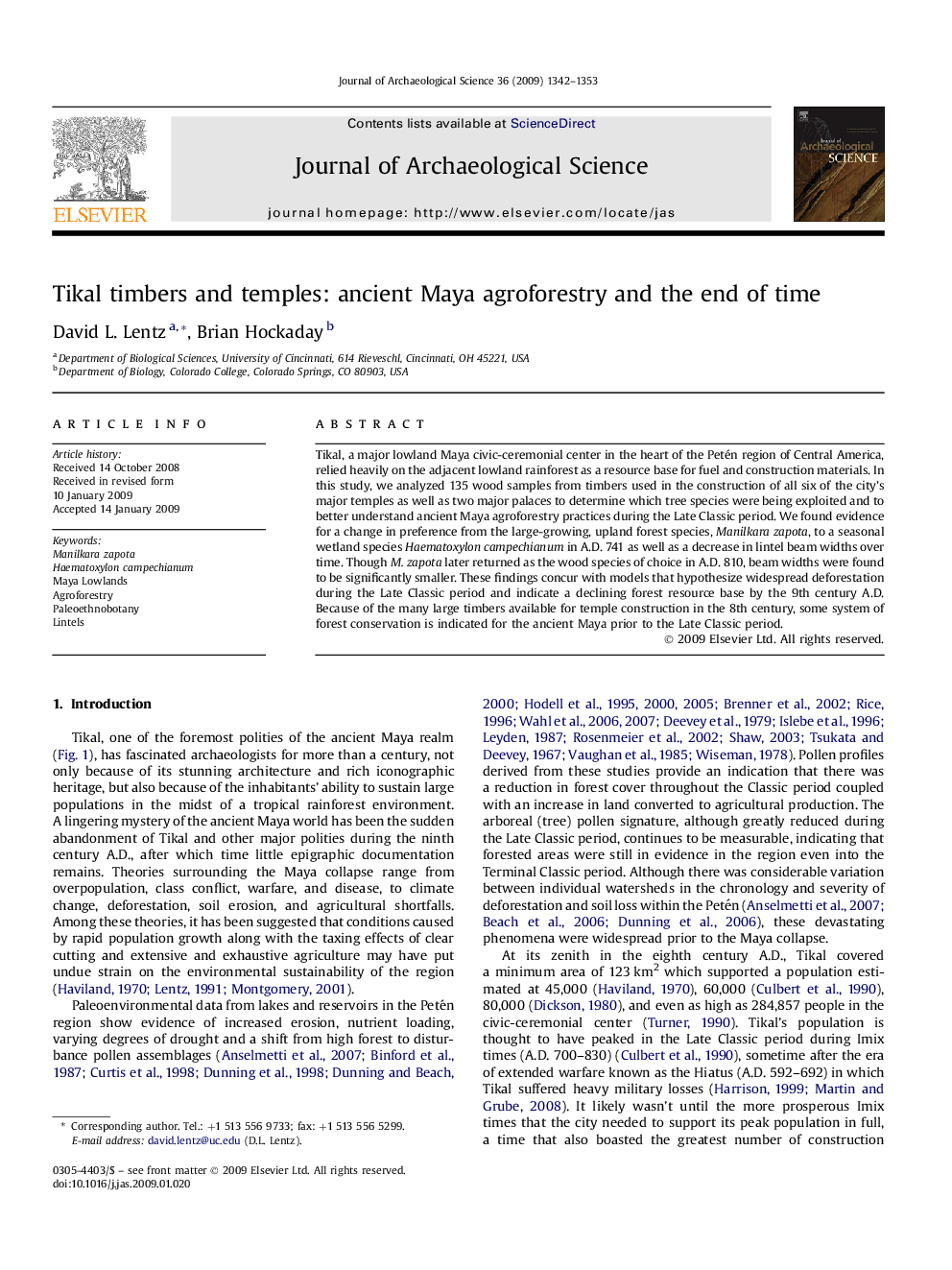| Article ID | Journal | Published Year | Pages | File Type |
|---|---|---|---|---|
| 1037012 | Journal of Archaeological Science | 2009 | 12 Pages |
Tikal, a major lowland Maya civic-ceremonial center in the heart of the Petén region of Central America, relied heavily on the adjacent lowland rainforest as a resource base for fuel and construction materials. In this study, we analyzed 135 wood samples from timbers used in the construction of all six of the city's major temples as well as two major palaces to determine which tree species were being exploited and to better understand ancient Maya agroforestry practices during the Late Classic period. We found evidence for a change in preference from the large-growing, upland forest species, Manilkara zapota, to a seasonal wetland species Haematoxylon campechianum in A.D. 741 as well as a decrease in lintel beam widths over time. Though M. zapota later returned as the wood species of choice in A.D. 810, beam widths were found to be significantly smaller. These findings concur with models that hypothesize widespread deforestation during the Late Classic period and indicate a declining forest resource base by the 9th century A.D. Because of the many large timbers available for temple construction in the 8th century, some system of forest conservation is indicated for the ancient Maya prior to the Late Classic period.
